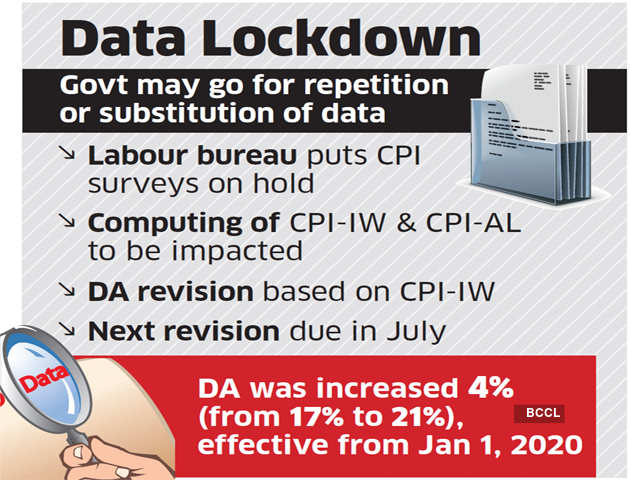The government has begun discussions on alternatives for the calculation of dearness allowance as data collection has halted in the lockdown period. Consumer price index–industrial worker (CPI-IW) and consumer price index-agricultural labour (CPI-AL) are the two indices used for calculating DA and rural employment wages.
Since field officers are not able to conduct the survey, the government may go for repetition, substitution or estimation to cover up the missing data when it computes the index for determining the daily allowance for government employees, a senior government official told ET.
Since field officers are not able to conduct the survey, the government may go for repetition, substitution or estimation to cover up the missing data when it computes the index for determining the daily allowance for government employees, a senior government official told ET.
“A decision to this effect will be taken once the lockdown is over,” the official said, adding: “However, we would definitely lose out on the exact estimation for a month.” The next revision in dearness allowance, which is based on CPI-IW, is due in July. The government had announced a hike of 4% in DA, from 17% to 21%, to be effective from January 1.
Economists say data should not be a constraint and revision can be done on an ad-hoc basis.

“These are exceptional times. Unavailability of data should not be a constraint for the government and they can do it on an ad-hoc basis,” said DK Joshi, chief economist at ratings firm CrisilNSE -3.25 %.
The labour bureau under the ministry of labour and employment conducts field surveys to collect prices of commodities, which constitute the consumption basket for industrial and agricultural workers, every month. Based on this, it arrives at a consumer price index-industrial worker for a month which is used to determine the dearness allowance for government employees twice a year.
The labour bureau has 78 industrial centres where surveys are conducted to assess the average change in inflation every month. These workers are spread across seven sectors including railways, ports, public transport and mining, among others.
Source : Economic Times
